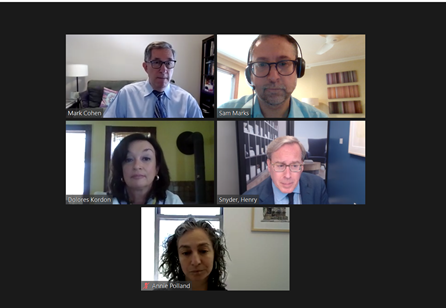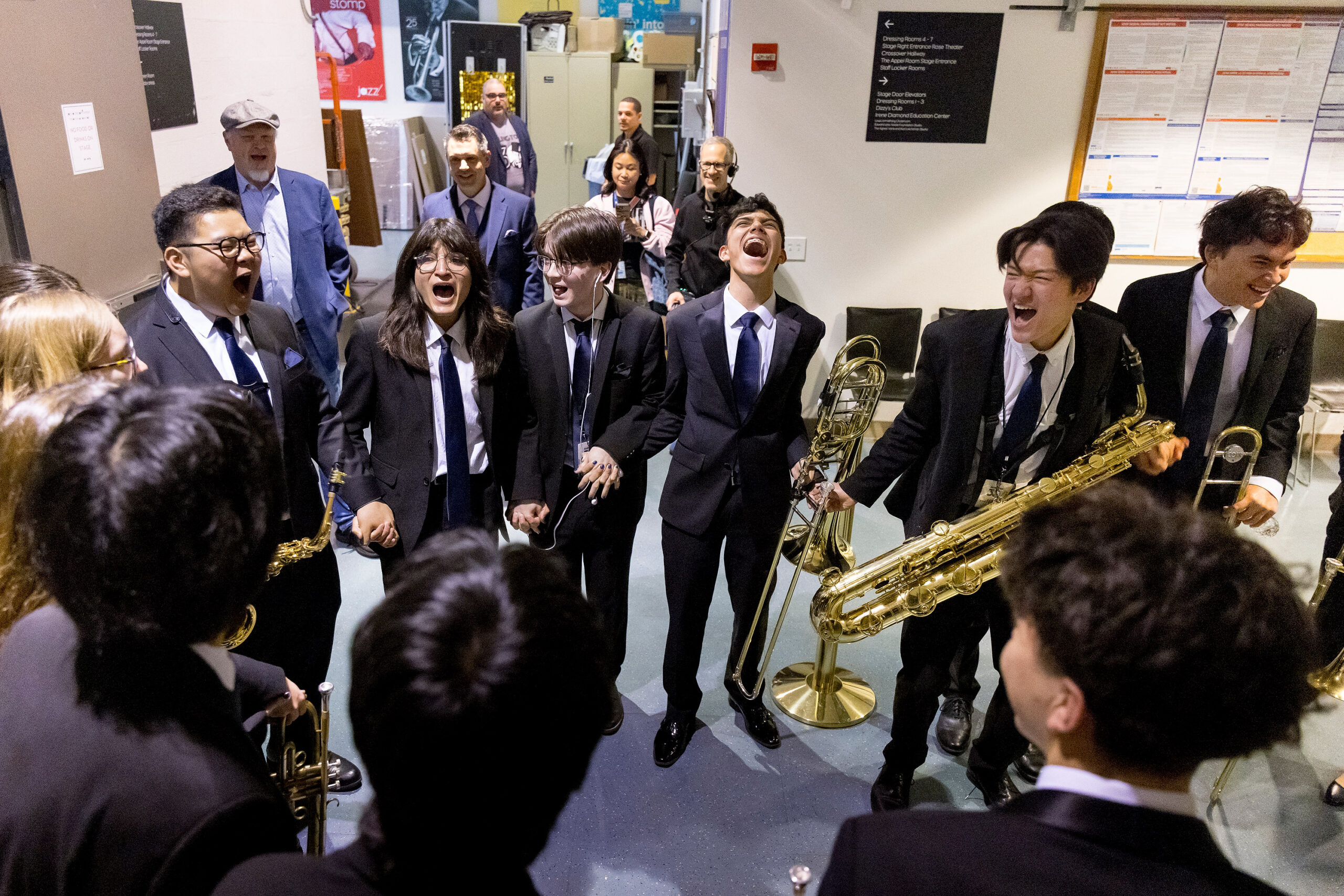Leaders of two nonprofit organizations whose urgent financial needs were met by innovative FJC donors were featured on a webinar hosted by the Estate Planning Council of NYC (EPCNYC), titled “Multiplying your Impact: Innovative Approaches to Revolving Philanthropic Dollars”. The nonprofit Executive Directors, Annie Polland of The Tenement Museum and Dolores Kordon of Brighter Tomorrows, were joined by members of FJC’s leadership, CEO Sam Marks and Chief Legal Officer Mark Cohen, who described the foundation’s role executing the transactions. The event was moderated by Henry Snyder, Executive Director of JP Morgan’s Private Bank, and a member of EPCNYC.
While most holders of Donor Advised Fund (DAF) accounts use their philanthropic funds for grants, the webinar highlighted cases where donors identified financing gaps in the organizations that could be addressed with solutions that combined philanthropic intent with investment strategies.
“We’re trying to inspire more of our donors to approach philanthropy in this way, and bring new donors that are inspired by examples like these.”
Sam Marks, Chief Executive Officer, FJC
In the case of Brighter Tomorrows, a domestic violence nonprofit serving women and families on Long Island, the donor was solving for a cash flow problem. As Ms. Kordon explained, the majority of the organization’s work is funded with government contracts. These contracts, typically administered through the state or county, are notoriously slow to pay even during normal times and are typically paid on a reimbursement basis. During the pandemic, when the needs of clients for shelter, food, and emergency assistance were at an all-time high, the public agency offices administering payments on the contracts were also facing major capacity issues. “Payments slowed to a snail’s pace,” Ms. Kordon lamented. “With the pandemic came all sorts of additional emergency costs, and we had to still keep the lights on and pay rent.”
Enter Sandy Wheeler, one of Brighter Tomorrows’ most steadfast donors. Ms. Wheeler worked with FJC to deploy $100,000 in her DAF account as a 0% interest revolving line of credit. This cash resource allowed Brighter Tomorrows to continue meeting the urgent needs of clients, even in the face of slower contract payments. In the year since the loan was closed, the funds have been fully drawn, repaid, and drawn again. “I can’t say enough about the importance of having a donor provide this resource,” says Ms. Kordon. “It was a godsend for us.”
“I can’t say enough about the importance of having a donor provide this resource. It was a godsend for us.”
Dolores Kordon, Executive Director, Brighter Tomorrows
FJC facilitated a more complex transaction with The Tenement Museum, a vital organization that has been researching and telling the stories of immigrant New Yorkers for the past 25 years. In the early days of the pandemic, the organization faced significant financial distress, as documented in an New York Times article, “A Museum Devoted to Survivors Faces Its Own Fight for Survival” (April 24, 2020). The article noted that 75% of the museum’s revenue came from earned income, reflecting admissions and gift shop revenue of its 285,000 annual visitors. As a result of the pandemic their visitors (and attendant revenue) had dried up, but the museum carried significant fixed costs due to its mortgage, which cost the museum $585,000 per year.
One of FJC’s donors read the New York Times article and reached out to inquire whether he could refinance the museum’s mortgage with funds in his DAF account. Upon further conversation with the Museum’s leadership, it was revealed that the mortgage was in the form of a tax-exempt bond, issued by the City of New York through its Build NYC Resource Corporation, a division of the NYC Economic Development Corporation. In coordination with the donor, FJC purchased the bond from the bondholder, and amended the terms to interest-only at 1% per year, reducing the museum’s annual debt service payment from $585,000 per year to $80,000. “We are paying $2.5 million less out of pocket for debt service over these five years,” explains Ms. Polland. “This has bought us time to figure out how we manage through this pandemic year, but it also freed us up to think of creative ways to operate.” Ms. Polland noted that the museum has been able to develop distance learning modules that have engaged students virtually from as far away as California. She also noted its new exhibit focusing on a Black family and a walking tour called “Reclaiming Black Spaces,” which explores sites connected with nearly 400 years of African-American presence on the Lower East Side. “The Museum is not just pausing,” she said. “We’re taking on new and addressing the questions important to this country. How does learning our history help us move forward?” The Museum’s new programs and strong emergence from the pandemic were featured again in the New York Times this month, a story that Ms. Polland describes as a “bookend” to the previous year’s story on the organization’s distressed financial picture.
“We are paying $2.5 million less out of pocket for debt service over these five years. This has bought us time to figure out how we manage through this pandemic year, but it also freed us up to think of creative ways to operate.”
Annie Polland, Executive Director, The Tenement Museum
Mr. Cohen explained that after five years, FJC intends to sell the bond back to the bond market, and will aim to recoup the $9.5 million face value of the bond for the donor’s account. These funds can then be recycled as grants or additional loans or impact investments.
The moderator Mr. Snyder noted that customized transactions like these do not appear to be standard offerings at most DAF sponsors. Mr. Marks noted that philanthropic lending and impact investing are more common at the more sophisticated, professionalized foundations and that FJC had a long history of applying best practices from philanthropy more broadly to their DAF account holders. “We’re trying to inspire more of our donors to approach philanthropy in this way,” says Mr. Marks, “and work with new donors that are inspired by examples like these.”




